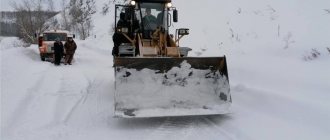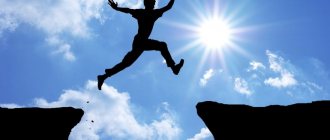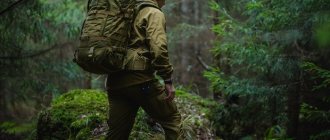Reading D. Defoe's novel “The Adventures of Robinson Crusoe,” we admired the man who managed to survive in an extreme situation, organizing his life in the conditions of a desert island. Robinson of the 21st century may find himself in a similar situation of his own free will and by chance. To be left alone with the delights of wild nature, it is better to be prepared in advance. This article will help with this.
Survival on a desert island
If one day you find yourself stranded on a desert island, it will be vital to know the general rules of survival to find water and food, avoid danger, start a fire, build a shelter, wait for outside help, or get out on your own.
As the most famous islander of all time, Robinson Crusoe, said: “... do not give in to difficulties and do not despair in anything.” Thus, the main advice is not to panic, but otherwise act according to a pre-thought-out plan, which includes six steps for successful survival on a desert island:
Find a source of drinking water
The first step towards survival on an uninhabited piece of land is finding a source of drinking water. Data on the possible survival time without water vary and are largely determined by additional conditions - ambient temperature, physical condition of a person, and the required intensity of physical activity. But the count definitely goes on in days, and sometimes in hours.
Figure 1. On a desert island, even without a source of clean drinking water, you can get life-giving moisture in several ways
Variations are possible in the search for the “source of life”:
- Rainwater harvesting is a great option when rainfall is already occurring or is expected soon (Figure 1). To do this, it is necessary to place all available containers under the drain. Large leaves directed into a reservoir work well as a natural drain.
- Melting snow is a seasonal method that requires the presence of snow cover.
- Dew collection is a good option for humid climates in tropical latitudes or in cases of significant differences in night and day temperatures. You can take cotton fabric as a storage device, spread it on the grass at dawn, and then wring it out. A regular cellophane bag without holes is also suitable for collecting condensation. It is put on a branch with leaves and tied. After some time (depending on external conditions), moisture collects inside the bag.
- Exploration of the territory: a thorough study of the entire archipelago can lead to a life-saving discovery - the discovery of a stream, lake or other source of fresh water that can provide its supply. A good guide are well-trodden animal trails, usually leading to a watering hole. Finding a source of water is your greatest success on the path to survival.
- Making a seawater desalinator from scrap materials when the methods listed above are not available. There are various options based on the vapor condensation process, the choice of which is determined by the available materials. For example, when you have one regular plastic bottle, making a simple reusable desalination maker will only take a couple of minutes. How to make and how to apply is shown in the video:
Important:
- Do not drink salty sea water, because... it does not quench thirst and increases fluid loss due to the physiological desire of the body to increase the intensity of salt excretion.
- It is better to boil fresh water obtained by any method for 10 minutes. (for heavy contamination – up to 40 minutes). Boiling kills 99.9% of known viruses and bacteria.
Designate your location
Using boulders, logs, or other accessible objects, build a beacon in an open area visible from afar to indicate your location (Figure 7). Be aware that the recognized basis for the SOS signal is the number 3 (in the UK it is 6). Therefore, it is recommended to stack 3 separate piles of stones, build 3 separate fires, etc., so that the sign given does not seem to be an accident.
Using signal fires is a very good option. Please note that fire is visible at night and smoke is visible during the day. Therefore, it is good to add a lot of leaves to daytime fires (the more, the better). Such a lighthouse will definitely attract attention both from the water and from the air.
Figure 6. These are the ways you can identify yourself on the island
An ultra-modern method requires the presence of an appropriate technical device. For example, Garmin offers navigation aids with satellite technology and distress alert capabilities. Using the global Iridium satellite network, users of some Garmin gadgets (inReach SE+, inReach Explorer+) can send a message to any mobile phone or email, regardless of the presence of a cellular network signal. When going to a desert island of your own free will, think about purchasing such a device.
Robinson Crusoe - the true story of life on the island
Robinson Crusoe. In my childhood, everyone was reading a novel about Robinson Crusoe and his adventures on a desert island. Many films have been made based on this book, including comedies. Some of them are quite funny. Others are just stupid.
However, few people know that Robinson Crusoe had a prototype in real life.
This story begins in the small fishing village of Fife in Scotland near Edinburgh. Here, in the family of a poor tanner, Selkgraig, a son was born in 1676, who was named Alexander, who became known as Alexander Selkirk. As he grew older, his hot temperament and uncontrollability began to appear, which led to conflicts with peers and adults.
He was known as a big drinker and was constantly on the run and in trouble with the law.
Finally, at the age of 17, he ran away from home and from that moment his life's adventures began. He joined the buccaneers that attacked Spanish ships during the English-Spanish War in the South Seas. He soon became famous in this field and the Spaniards put him on the wanted list.
Selkirk also did not waste his time in vain and mastered navigation and control of the ship well, gaining extensive experience in navigation.
In 1703, he took part in an expedition consisting of two ships, Chinque Ports and St. George, under the command of William Damper. They hunted Spanish ships off the coast of Central and South America. Selkirk was at Chinque Ports under the command of Captain Thomas Stradling.
Stradling, after a quarrel with Damper, separated from his ship and went on an independent voyage.
Due to his quarrelsome nature, Selkirk constantly came into conflict with the captain, often disobeyed his orders, and during his watch he got drunk as hell.
The crew members paid him in kind, but tolerated him for his exceptional navigational abilities.
The situation on the ship was aggravated by poor food and a decrease in the ration of water and food; rats and cockroaches infested the ship.
The morale of the people fell lower and lower and led to a riot on the ship.
Popular articles: Blavatsky's secrets revealed. Paranormal abilities











